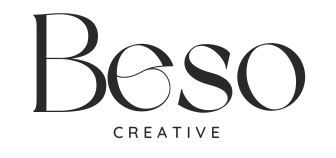The Psychology Behind Website and UX Design: How Science Shapes User Behavior
- Freya Harrison
- Oct 28, 2024
- 3 min read
When it comes to creating a successful website, aesthetics alone won’t cut it. A great website needs to be grounded in psychological principles that shape user behavior and improve overall user experience (UX). Understanding how the human brain processes information can help guide decisions on everything from layout and color choices to text placement and user flow.
In this post, we’ll dive into the most important psychology-backed principles you should consider when designing a website, ensuring that your site isn’t just visually appealing but also user-friendly and effective.

1. The Impact of Cognitive Load on Users
Ever felt overwhelmed on a cluttered website? That's due to cognitive load, which refers to the amount of mental effort required to process information. Research shows that when a website is too visually complex or content-heavy, it increases the cognitive load on the user, making it difficult for them to navigate or engage with the site (Sweller, 1988). A high cognitive load can lead to frustration, ultimately driving users away.
Key Takeaway: To reduce cognitive load, keep your design simple and organized. Use clear headings, break up text into manageable chunks, and ensure your site’s layout is intuitive.
2. The Power of Visual Hierarchy in web design
The concept of visual hierarchy is crucial in guiding users through your website. Studies by the Nielsen Norman Group reveal that users typically follow an "F-shaped" reading pattern, scanning a page from left to right and top to bottom (Nielsen, 2006). By strategically arranging your most important content—using larger fonts, bold colors, or prominent positioning—you can direct users' attention to key elements on your site.
Key Takeaway: Design with purpose by using visual hierarchy to prioritize information. Place critical messages and CTAs where they’re most likely to be seen to reduce decision fatigue and improve user flow.
3. The Psychology of Color
Color is a powerful tool in web design, triggering emotional responses that influence user behavior. According to research by Labrecque & Milne (2012), colors like blue evoke trust and calmness, while red can induce urgency or excitement. Understanding how your color palette impacts users on a subconscious level allows you to align your brand with the right emotions and behaviors.
Key Takeaway: Select a color scheme that reflects your brand's values and goals. If trust and professionalism are important, opt for shades of blue. For excitement and urgency, use accents of red or orange sparingly.

4. Familiarity Breeds Trust
The Mere Exposure Effect is a psychological phenomenon that suggests we tend to develop a preference for things we’re familiar with. In web design, this means that users are more comfortable navigating sites that follow familiar patterns—think traditional navigation menus, standard layouts, and recognizable icons (Zajonc, 1968). Overly experimental designs may confuse users, making them less likely to engage with your content.
Key Takeaway: Stick with tried-and-tested design elements. Familiarity reduces cognitive effort, increases ease of use, and helps build trust with your audience.
5. User-Centered Design
At the heart of every successful website is user-centered design (UCD), which focuses on understanding and addressing the user's needs, behaviors, and emotions. By employing tools like empathy mapping, designers can gain deeper insights into how users think, feel, and interact with the site. This understanding allows for the creation of a more intuitive, enjoyable user experience that meets the user’s expectations.
Key Takeaway: Designing with empathy leads to better outcomes. Always consider the user journey when planning your site structure and content to ensure it is easy to navigate and enjoyable to use.
6. How Much Text Should Be on a Page?
When it comes to text, less is more. Research shows that users typically skim rather than read, especially online (Nielsen Norman Group, 2008). Additionally, studies by Microsoft reveal that the average attention span online is around 8 seconds. Long paragraphs or excessive information can overwhelm users, causing them to leave the page.
Key Takeaway: Keep your content concise and scannable. Use short paragraphs (40-70 words), bullet points, and headers to make your text more digestible. Focus on delivering the key messages quickly and effectively.
Conclusion: Design with the User’s Brain in Mind
Understanding the psychology behind web design and UX is essential to creating a website that not only looks great but functions smoothly for the user. By reducing cognitive load, using visual hierarchy, leveraging the right color palette, and prioritizing user-centered design, you can create a website that engages users and drives conversions.
Ready to apply these psychology-backed principles to your website? Let’s chat about how we can optimize your design for maximum impact.
References:
Sweller, J. (1988). Cognitive load during problem solving: Effects on learning.
Nielsen Norman Group (2006). F-Shaped Pattern for Reading Web Content.
Labrecque, L. I., & Milne, G. R. (2012). Exciting Red and Competent Blue: The Importance of Color in Marketing.
Zajonc, R. B. (1968). Attitudinal Effects of Mere Exposure.
Microsoft Attention Spans Research Report (2015).

Comments